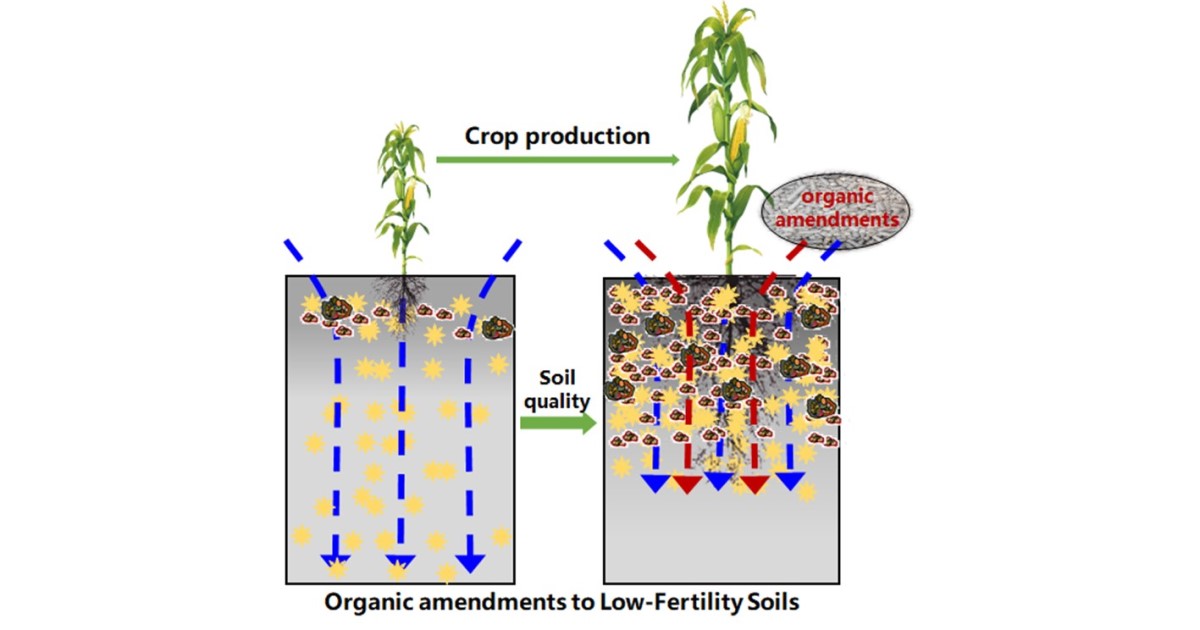Organic Amendments to Low-Fertility Soils: Current Status and Future Prospects
A special issue of Agronomy (ISSN 2073-4395). This special issue belongs to the section "Soil and Plant Nutrition".
Deadline for manuscript submissions: 10 November 2025 | Viewed by 14006

Special Issue Editors
Interests: soil C sequestration; soil health; plant–microorganism–soil interactions
Special Issues, Collections and Topics in MDPI journals
Interests: agriculture; crop production; soil fertility; soil health
Special Issues, Collections and Topics in MDPI journals
Special Issue Information
Dear Colleagues,
Low soil fertility is a common problem in many regions around the world. For example, the soils of arid and semi-arid regions often have low water retention capacity and inadequate nutrient supply levels for most agricultural plants. Anthropic activities, including intensive agricultural practices and rapid industrialization, may also magnify soil degradation. Soil degradation leads to conditions that threaten soil function and productivity, including salinization, desertification, erosion, nutrient depletion, etc. There is increasing interest in rehabilitating low-fertility soils to improve crop yield and sustainability. The addition of organic amendments (i.e., manure, green manure, straw, biochar, biofertilizer) to low-fertility soils has become a common practice over the last few decades to improve soil microenvironment and consequently soil health. Since a single process cannot represent the complexity of agroecosystems in the real world, it is still unclear how organic amendments impact soil quality and ecosystem multifunctionality. Moreover, recent studies confirmed that the application of a combination of organic ameliorants presents more benefits to increase nutrient utilization and microbial activities, thus improving soil health. Nevertheless, the effects of the combination of organic amendments on low-fertility soil health are still unclear.
Therefore, in this Special Issue, the articles (original research papers, perspectives, hypotheses, opinions, reviews, modeling approaches and methods) focus on the effect of organic amendments on soil organic carbon, greenhouse gas emission, microbial biodiversity, and subsequently soil health and crop production. It is intended to provide a better understanding of potential soil reclamation practices in low-fertility soils.
Dr. Jie Zhou
Guest Editor
Dr. Xiquan Wang
Guest Editor Assistant
Manuscript Submission Information
Manuscripts should be submitted online at www.mdpi.com by registering and logging in to this website. Once you are registered, click here to go to the submission form. Manuscripts can be submitted until the deadline. All submissions that pass pre-check are peer-reviewed. Accepted papers will be published continuously in the journal (as soon as accepted) and will be listed together on the special issue website. Research articles, review articles as well as short communications are invited. For planned papers, a title and short abstract (about 100 words) can be sent to the Editorial Office for announcement on this website.
Submitted manuscripts should not have been published previously, nor be under consideration for publication elsewhere (except conference proceedings papers). All manuscripts are thoroughly refereed through a single-blind peer-review process. A guide for authors and other relevant information for submission of manuscripts is available on the Instructions for Authors page. Agronomy is an international peer-reviewed open access monthly journal published by MDPI.
Please visit the Instructions for Authors page before submitting a manuscript. The Article Processing Charge (APC) for publication in this open access journal is 2600 CHF (Swiss Francs). Submitted papers should be well formatted and use good English. Authors may use MDPI's English editing service prior to publication or during author revisions.
Keywords
- soil carbon sequestration
- microbial community
- greenhouse gas emission
- crop production
- straw
- manure
- green manure
- biochar
- biofertilizer
Benefits of Publishing in a Special Issue
- Ease of navigation: Grouping papers by topic helps scholars navigate broad scope journals more efficiently.
- Greater discoverability: Special Issues support the reach and impact of scientific research. Articles in Special Issues are more discoverable and cited more frequently.
- Expansion of research network: Special Issues facilitate connections among authors, fostering scientific collaborations.
- External promotion: Articles in Special Issues are often promoted through the journal's social media, increasing their visibility.
- Reprint: MDPI Books provides the opportunity to republish successful Special Issues in book format, both online and in print.
Further information on MDPI's Special Issue policies can be found here.






